Thursday, June 23, 2011
Thursday, June 2, 2011
Tuesday, May 10, 2011
Artists Space launches new venue: Artists Space: Books & Talks' on Grand St. and West Broadway

May 10, 2011, 7 - 9 pm at Artists Space
38 Greene St, 3rd Floor
Artists Space: Books & Talks is an additional 2,500 square foot storefront venue on Grand Street and West Broadway. This space will in future host a bookshop – with 1,000 titles exclusively selected by 100 artists, writers and critics, each suggesting 10 antiquarian or new titles – and an auditorium, allowing Artists Space to more frequently host talks, screenings and other events.
This new venture will compliment Artists Space: Exhibitions, the original 7,500 square foot exhibition space on Greene and Grand Streets, located within two minutes walking distance from Artists Space: Books & Talks.
As a pre-opening event, Artists Space: Books & Talks will host the launch of dOCUMENTA (13)´s 100 Notizen – 100 Gedanken / 100 Notes – 100 Thoughts series. The first 17 notebooks will be discussed at Artists Space with some of the New York-based authors including: Susan Buck-Morss, Kenneth Goldsmith, Paul Ryan, and Michael Taussig. The evening will be moderated by Bettina Funcke, Head of Publications for dOCUMENTA (13) and Chus Martínez, Head of Department, Member of Core Agent Group. Carolyn Christov-Bakargiev, Artistic Director of dOCUMENTA (13), will take part in the discussion.
As a prelude to the 2012 exhibition, dOCUMENTA (13) has initiated a series of publications driven by the logic of the mind-at-work, presenting, writing, and drawing scenarios that point outside the normative bounds of academic text production. In the form of facsimiles of existing notebooks, commissioned essays, collaborations between artists and writers, and conversations, they present models of connection-making between the private and the public, between the pre-stage of intuitions, the naming of ideas and the key-chain of arguments that provide the reader with a singular insight into working methods. The series is formed through interconnections, so that the notebooks could be described as an "interregnum," a temporary rupture in discursive intelligence; they do not direct us towards reason as such, but towards a different understanding of the role of consciousness. It is pure speculation: can one effectively transform thinking while thinking at the same time? The notebooks show us the hand trying to trace other logics, trying to travel a bit farther away from the already known in order to cover a distance between the now and the near future.
The notebooks appear in three different formats (A6, A5, B5) and range from 16 to 48 pages in length. Contributors hail from diverse fields – art, science, philosophy, psychology, anthropology, political theory, literature studies, and poetry – and include Etel Adnan, Kenneth Goldsmith, Péter György, Emily Jacir, Susan Buck-Morss, Alejandro Jodorowsky, Carolyn Christov-Bakargiev, William Kentridge, Peter L. Galison, Erkki Kurenniemi, Lars Bang Larsen, György Lukács, Christoph Menke, Paul Ryan, Ayreen Anastas, Rene Gabri, Vandana Shiva, G.M. Tamás, Michael Taussig, Jalal Toufic, Ian Wallace, and Lawrence Weiner.
Commissioned by dOCUMENTA (13)'s Artistic Director Carolyn Christov-Bakargiev together with Chus Martínez, Head of Department, Member of Core Agent Group. This series is edited by Bettina Funcke, Head of Publications.
The 100 Notizen – 100 Gedanken / 100 Notes – 100 Thoughts will be launched at various places and in various moments, each accompanied by a discussion on the nature and the aim of this publishing project.
You can buy individual notebooks or subscribe to the entire series of 100 notebooks at www.hatjecantz.de/documenta13. For further information about dOCUMENTA (13), including the publications, visit www.documenta.de
Forthcoming at Artists Space
Site
Video Data Bank launches new website

Video Data Bank has launched a new website. Hiring web developers Fuse IQ for the re-design, the new site is now much more user friendly and has a variety of fun and functional new features. It's exciting that the nearly 40 year old 'institution/collection' will now be more accessible and transparent to the public.
Video Data Bank's site has had the same design as long as I have been using it, which amounts to something like 5 years. Like most websites, it had room for improvement. Specifically, the small images and deeply nested resources on the the previous site. Also, (I might be imagining this) but I'm pretty sure the last site had a black interface, which looked and felt bulky when coupled with the small type and thumbnail images. The white is much cleaner, and the information is much better organized in general, which leads to easier navigation. The main things that have changed include the Video Art Gallery, which features larger images and longer clips; user accounts, improved searching, a news and events section, and resources. Also, curators and programmers can now preview videos with special permission through their user account.
It's interesting how a redesign of a website can really change it's public appearance and functionality. It will now be much more user-friendly, which will hopefully lead to more video sales/rentals from collectors, collections, and institutions. Also, better-accessible archives and resources will enable future scholarship.
Judging by the design of the site, this was not a cheap upgrade. Congrats to VDB for finding a way to finance this project, which will only further the success, access, and visibility of the collection. In a moment, where institutions' web presence is nearly as essential for generating public awareness as their reputation, this upgrade comes as a great step forward!
Below is a list of new features from the site, which can also be viewed by following this link:
Whats New?
The staff team at Video Data Bank is pleased and proud to announce the launch of our new and improved website, redesigned with a fresh look and a more user-friendly experience. With the help of our developers at Fuse IQ, we've been able to improve navigation, enable online ordering, and bring our clients and artists a number of great new features, such as:
User Accounts: Create a new Account so you can login to vdb.org at any time - make comments about your favorite videos, create video wish lists, donate to VDB, or order online.
Wish Lists: Wish lists will make it easy for you to keep track of your most-wanted videos. After creating your user account, just click "Add to Wish List", choose your format & use type, and add to your wish list. Send your wish list on to others - great for faculty who need to communicate with their librarians and purchasing departments.
Online Ordering: When logged in to your user account, use vdb.org to process standard sales and rentals for most titles. Just click "Order Video", choose your format & use type, and add to your shopping cart. Check out using an institutional purchase order, or pay via credit card with our secure hosted payment gateway.
Video Art Gallery: View the latest and greatest of VDB clips in the Video Art Gallery. Select from New Releases, Featured Videos, Most Viewed, and Random Picks.
Improved Browsing and Searching the Collection: Navigating the collection is now very simple! In the Browse the Collection side bar, you can search by Artist or Title, check out the latest additions to the archive in New Releases and DVD Box Sets, scan through our Curated and Single Artist Compilations, or navigate one of our Special Collections: On Art and Artists, Videofreex Archive, Early Video Art, Kuchar Archive.
Bigger and Better Video Clips and Images: Tiny clips are a thing of the past! View full-screen, high-quality clips and images for all VDB titles in distribution throughout the new site.
Listing Style: Throughout the site, choose to view information via one of two different styles - Gallery View or List View.
Up-to-the-Minute News + Events: It's easier than ever for us to feature VDB artist news, upcoming events, recent newsletters, and VDB in the press.
Video Art Related Merchandise: Show your love for VDB! Order a copy of the essential Feedback: The Video Data Bank Catalog of Video Art and Artist Interviews, or purchase some new VDB swag (more coming soon!).
Video Art Resources: Download essays about video art and artists commissioned by VDB, scan our comprehensive, annotated bibliography of critical writing on the history of video and media art, view links to other organizations and resources related to VDB, or check out what's available in our on-site print library.
Online Donations: As a 501(c)3 not-for-profit organization, VDB relies on funding from federal and state agencies, and donations from the public. Here you can quickly and easily donate to invest in the continued success of VDB's mission and programs. All donations are tax-deductible.
Curators and programmers will also have the ability to view full-length video previews, and our artists can update their contact information and check in anytime to see where their work has been previewed, screened or sold.
Note that the new vdb.org is still in the "soft launch" phase, and you may encounter minor bugs or missing information while using the site. We appreciate your patience during this time, and ask that you notify us with any problems you come across by emailing info@vdb.org. Thank you!
Thursday, May 5, 2011
Ken Jacobs Interview in TimeOut Chicago
The avant-garde icon will present a live work at the Film Studies Center.
LIGHT MOTIF Jacobs, inset, performs at the Paris Cinematheque. “The Green Wave,” background, is a DV experiment in stereoscopic imagery “without spectacles.”
For more than 50 years, Ken Jacobs has been a key figure in American experimental cinema, creating a steady stream of acclaimed and influential films, live moving-image works and, more recently, digital videos. He is best known for his seminal Tom, Tom, the Piper’s Son (1969), which expands a 1905 film into a feature-length exploration of its form and images, and the decades-in-the-making, seven-hour epic Star Spangled to Death (2003). But even those familiar with Jacobs’s filmmaking might be astonished at the sheer number of live works he’s done over the years, including shadow plays, his amazing Nervous System setup (in which two projectors and a rotating shutter allow for near-forensic investigations of film material) and the Nervous Magic Lantern, a simpler but no less amazing device that hearkens back to 19th-century technology. The NYC-based filmmaker, 77, will perform a work with the latter on Thursday 5. We e-mailed him about
his first appearance in Chicago in three decades.
You’ve been doing live-projection works almost as long as you’ve been making films. What first interested you in these more ephemeral kinds of “cinema”? How and why did you start?
With my first money for a film projector, in 1954, I bought a Kodak Film Analyst for examining 16mm film at various speeds—going backwards and forwards. Occasionally, friends would sit in on these studies, which I never thought about as performance.… In 1975, teaching in Binghamton [New York], I mentioned an idea to a fellow artist-teacher, Dan Barnett: using both of the department’s stop-motion projectors to hold sequential frames on screen from two prints of a film, polarized, and viewing them with polaroid spectacles.… Dan was enthusiastic and we tried it. And it was a dream come true. The scene suddenly appeared in deep space. Space was a turn-on for me. This led to my first public film performance, The Impossible: Chapter One, South’wark Fair.
The Nervous Magic Lantern and Nervous System performances seem to come from the same interests that led to Tom, Tom, the Piper’s Son: a fascination with early cinema, exploring the material of film and transforming and abstracting reality, but heightened by the possibility of creating 3-D. Do you see them as related?
My interest in [the 1905] “Tom, Tom” came about because it seemed such a disaster; the primitive film-making was showing all over it. It showed its age. Now and again I saw a character look into the camera, looking at me 60 years later. The role fell away and here was a human. I was touched by this and that got me into chasing down the reality of what is this strange ribbon of images called film. Four of the five chapters of The Impossible utilized and further investigated scenes from “Tom, Tom.” I would be coming up with different techniques but the impulse to create crazy 3-D events was consistent.
Can you describe a bit what the Nervous Magic Lantern is and what audiences can expect?
The Nervous Magic Lantern has got to be the strangest thing I ever attempted. It came to me in a dream, and made no sense. No projector has ever been more basic: a light, a lens, a shutter and some space between light and lens for me to fool around. Images are vastly 3-D and going through impossible changes. I’m enjoying it with audiences as long as I can before it’s declared illegal.
Jacobs and his wife, Flo, will present one of his Nervous Magic Lantern works, Time Squared, along with two digital videos, at the Film Studies Center at the University of Chicago Thursday 5 at 7pm.
Tuesday, May 3, 2011
Mark Fisher to lecture at Cooper Union
From Fisher's website:
What are grey vampires and how do they retard the insurrectionary potential of digital discourse? How does Derrida’s notion of hauntology contribute to an understanding of dubstep artist Burial? Is ‘Basic Instinct 2’, routinely derided as a cine-atrocity, a Lacanian reworking of Ballard, Baudrillard and Bataille in service of the creation of a “phantasmatic, cybergothic London”? What is interpassivity and in what ways has it come to define the corporatized incarceration of modern academia?
Over the last decade, Mark Fisher has established a reputation as one of the exhilarating cultural theorists in Britain. A co-founder of the Cybernetic Culture Research Unit (CCRU) at Warwick University – and described by Simon Reynolds as the academic equivalent of Apocalypse Now’s Colonel Kurtz – he brings together psychoanalysis, political analysis and speculative fiction to create an extraordinary body of rogue scholarship, a theory-rush with few parallels.
Fisher is the author of ‘Capitalist Realism’, the editor of ‘The Resistible Demise of Michael Jackson’ (both Zer0, 2009), and writes regularly for Sight and Sound, Film Quarterly, The Wire and Frieze, as well as maintaining a well-known blog at k-punk.abstractdynamics.org. He teaches at the University of East London, Goldsmiths, University of London, and the City Literary Institute.
The Colloquium for Unpopular Culture and NYU’s Asian/ Pacific/ American Studies program are pleased to be hosting Fisher’s first talks in America.
http://pontone.pl/pontones-special-guest-mix-k-punk-the-metaphysics-of-crackle/
--
MARK FISHER, THERE ARE NON-TIMES AS WELL AS NON-PLACES: REFLECTIONS ON HAUNTOLOGY
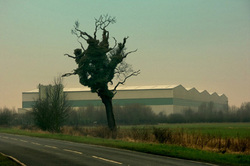 | 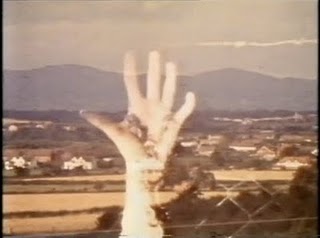 |
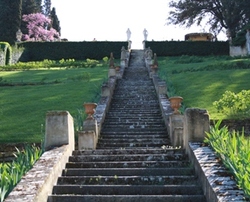 | 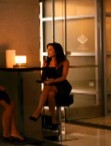 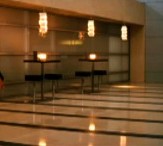 |
WHEN: Wednesday 4 May 2011, 6:30pm
WHERE: Room 471, 20 Cooper Square [East 5th and Bowery]
FREE AND OPEN TO THE PUBLIC
“Through their generic and transient qualities – workstations devoid of personal effects, relations with colleagues as fleeting as those with passengers on a commuter journey – many workplaces now resemble non-places, either literally, as in the case of a hotel, corporate coffee chain or out-of-town supermarket, or symbolically, in the form of temporary assignments for faceless employers (dis)located in anonymous buildings, where the worker-commuter then follows the same global timetables, navigates the same software applications and experiences the same sense of placelessness, the feeling of being mere data in the mainframe.”
So writes Ivor Southwood in his analysis of precarious labour, ‘Non-Stop Inertia’ (2011). In the last decade, the proliferation of corporate non-places has been accompanied by the spread of cyberspace-time, or Itime, a distributed or unpunctuated temporality. It’s no coincidence that, as this unmarked time increasingly came to dominate cultural and psychic space, Derrida’s concept hauntology (re)emerged as the name for a paradoxical zeitgeist. In ‘Specters of Marx’, Derrida argued that the hauntological was characterised by “a time out of joint”, and this broken time has been expressed in cultural objects that return to a wounded or distorted version of the past in flight from a waning sense of the present. Sometimes accused of nostalgia, the most powerful examples of hauntological culture actually show that nostalgia is no longer possible. In conditions where pastiche has become normalised, the question has to be: nostalgia compared to what?
James Bridle has recently argued that “the opposite of hauntology ... [is] to demand the radically new”, but hauntology in fact operates as a kind of thwarted preservation of such demands in conditions where - for the moment at least - they cannot be met. Whereas cyberspace-time tends towards the generation of cultural moments that are as interchangeable as transnational franchise outlets, hauntology involves the staining of particular places with time - albeit a time that is out of joint. In this lecture, Fisher will explore the hauntological culture of the last few years in relation to the question of place, using examples from music (Burial, The Caretaker, Ekoplekz, Richard Skelton), film (Chris Petit, Patrick Keiller) and fiction (Alan Garner, David Peace).
--
MARK FISHER, DEPACIFICATION PROGRAM: FROM CAPITALIST REALISM TO POST-CAPITALISM
WHEN: Thursday 5 May 2011, 6:30pm
WHERE: Room 471, 20 Cooper Square [East 5th and Bowery]
FREE AND OPEN TO THE PUBLIC
“It would be best, perhaps, to think of an alternate world - better to say the alternate world, our alternate world - as one contiguous with ours but without any connections or access to it. Then, from time to time, like a diseased eyeball in which disturbing flashes of light are perceived or like those baroque sunbursts in which rays from another world suddenly break into this one, we are reminded that Utopia exists and that other systems, other spaces, are still possible.” (Fredric Jameson, ‘Valences of the Dialectic’)
In his 2009 book ‘Capitalist Realism’, Mark Fisher started to explore some of the affective, psychological and political consequences of the deeply entrenched belief that there is no alternative to capitalism. After 1989, capital seemed to enjoy full spectrum dominance of both global space and the unconscious. Every imaginable future was capitalist. What has been mistaken for post-political apathy, Fisher argued, was a pervasive sense of reflexive impotence in the face of a neoliberal ideological program which sought to subordinate all of culture to the imperatives of business. The subject of post-Fordist capitalism is no passive dupe; this subject actively participates in an ‘interpassive’ corporate culture which solicits our involvement and encourages us to ‘join the debate’. As Fisher argues in the book, education has been at the forefront of this process, with teachers and lecturers locked into managerialist self-surveillance, and students induced into the role of consumers.
In the eighteen months since ‘Capitalist Realism’ was published, the neoliberal program has been seriously compromised, but capitalist realism has intensified - with austerity programs pushed through on the basis that it is unthinkable that capitalism should be allowed to fail. At the same time, this new, more desperate form of capitalist realism has also faced unexpected challenges from a militancy growing in Europe, the Middle East and even in the heartlands of neoliberalism such as the UK and the US. Now that history has started up again, and Jameson’s “baroque sunbursts” flare brighter than they have for a generation, we can begin to pose questions that had receded into the unimaginable during the high pomp of neoliberal triumphalism: what might a post-capitalism look like, and how can we get there?
Fisher will argue that the Left will only succeed if it can reclaim modernity from a neoliberal Right that has lost control of it. This entails understanding how the current possibilites for agency are contoured and constrained by the machinery of what Deleuze and Foucault called the Control Society, including cyberspace, the media landscape, psychic pathologies and pharmacology - failures to act are not failures of will, and all the will in the world will not eliminate capitalism. It also entails recognising that neoliberalism’s global hegemony arose from capturing desires which it could not satisfy. A genuinely new Left must be shaped by those desires, and not be lulled, once again, by the logics of failed revolts.
Monday, May 2, 2011
Rudy Wurlitzer retrospective at Anthology
I Went to Anthology on Saturday for the Wurlitzer retrospective, where the film Glen and Randa was followed by a Q&A between long-time friends and contemporaries, Robert Downy Sr. and the honored screenwriter himself, Rudy Wurlitzer.
The Q&A started with Downey thanking Anthology for finally doing an interesting retrospective, one that he would actually want to attend. Which I suppose was a compliment. Although I think it was also his attempt being humble, seeing as his own films are featured at the canonizing institution with high frequency.
Interesting anecdotes included stories about Hal Ashby, and how easy and inclusive of a director he was, how crazy and brilliant Sam Peckinpah was. (There was a story about Wurlitzer bringing Bob Dylan to Peckinpah's hacienda in Mexico introduce the two before 'Pat Garrett and Billy the Kid.' With each step the two took towards the hacienda, sounds of broken glass and gunshots were heard, and followed shortly by maids fleeing. When the two finally entered the director's bed-quarters, he was standing in front of the mirror naked, pointing a gun at his 'image.' Wurlitzer said that Bob Dylan knew he liked him because he thought Peckinpah was the real deal.)
Another story was about how Antonioni refused to work with Wurlitzer because he couldn't bear to look at Wurlitzer's scrubby clothes. Desperate to rectify the solution, Wurlitzer agreed to allow Antonioni to take him shopping. The agreement culminated in a ridiculous shopping spree, for which Wurlitzer was billed $20,000 in Italian suits with matching orange scarves/sock combinations and the like. And the film still has yet to be produced. The two old friends had a good laugh over that story.
The night ended with Bob Downey saying that he hopes for more retrospectives at Anthology that focus on screenwriters as opposed to directors.
